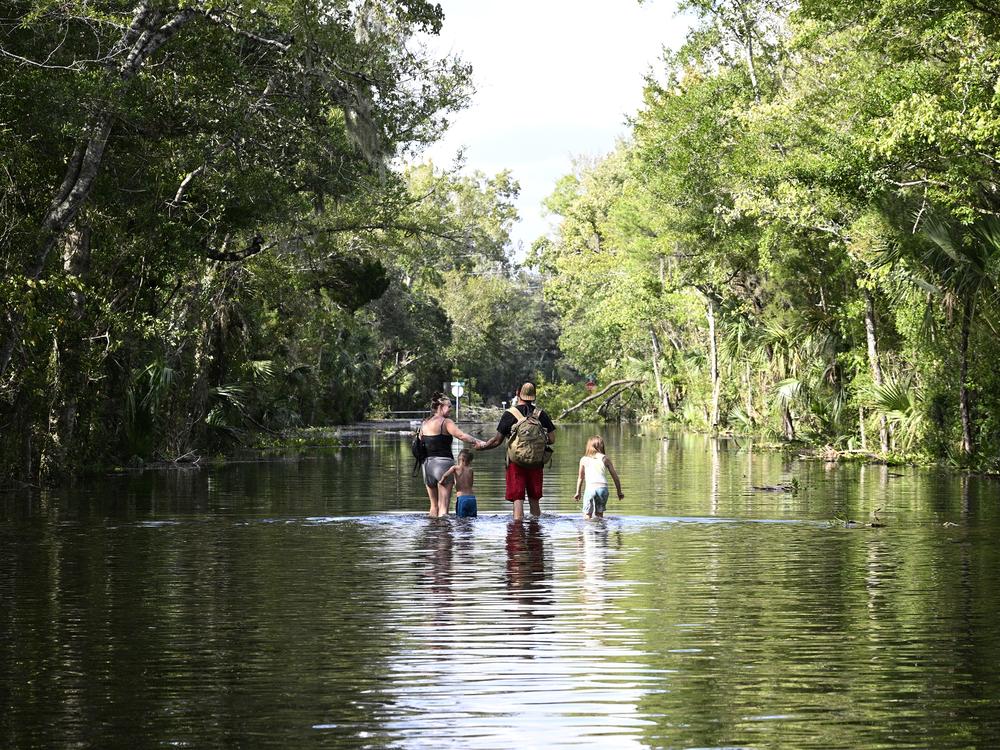Section Branding
Header Content
Are hurricanes getting worse? Here’s what you need to know
Primary Content
Hurricane Milton is bearing down on Florida, threatening some areas hit hard by Hurricane Helene less than two weeks ago.
Milton will be the fifth hurricane to make landfall in the U.S. this year. Like Helene, the storm has gained strength rapidly as it spins across the Gulf of Mexico, where water temperatures are abnormally high.
The back-to-back storms illustrate potential dangers as human-caused climate change makes hurricanes more intense.
Below, we break down how warming temperatures are changing hurricane season. In the U.S., hurricane season officially ends Nov. 30.
Are hurricanes becoming more frequent?
Climate change has not led to an increase in the total number of hurricanes hitting the U.S. each year. But the storms that do form are more likely to become more intense, with higher wind speeds, heavier rainfall, and more severe storm surge.
So while the total number of storms doesn’t appear to be changing, dangerous storms are becoming more common.
This year has actually seen fewer hurricanes than expected. But an unusual number of those storms have made landfall in the U.S.
When Hurricane Milton reaches Florida, it will be the fifth named storm to make landfall in the U.S. this year.
Loading...
Loading...
The number of storms that make landfall in a given year doesn’t necessarily indicate how destructive a hurricane season is. Neither does the category, which measures wind speed but not rainfall or storm surge.
In 2012, only two hurricanes hit the U.S., and both were Category 1 at landfall. But one was Hurricane Sandy, which caused tens of billions of dollars in damage up and down the East Coast.
How does climate change make hurricanes worse?
To put it simply, warmer ocean temperatures fuel more powerful storms – and climate change is driving record-high sea surface temperatures.
The Atlantic Ocean, where hurricanes that hit the U.S. form, and the Gulf of Mexico just off Florida, have been hotter than average for more than 18 months, driven both by climate change and the recent El Nino weather pattern.
Loading...
Warmer ocean temperatures can lead to heavier rainfall and more severe flooding. Storms like Hurricane Helene suck up huge amounts of moisture as they move towards land, which then falls as rain, and can cause flooding far from the coast.
Climate change is also driving sea levels higher, which means more dangerous storm surges.
Scientists are also exploring whether climate change is causing storms to gain strength more quickly, as Hurricanes Beryl, Helene, and Milton have all done this year. When storms intensify rapidly, it can be difficult to prepare and evacuate communities in time.
What hurricanes have happened in 2024?
So far, four hurricanes have made landfall in the U.S., and Hurricane Milton is projected to reach Florida within days.
- Hurricane Milton intensified "explosively" into a Category 5 storm on Monday. By early Tuesday morning, the National Hurricane Center had downgraded it to a Category 4 storm, while warning it posed an "extremely serious" threat to Florida.
- Hurricane Helene hit the Big Bend area of Florida on Sept. 26 as a Category 4 storm, and went on to drive catastrophic flooding across the Southeast.
- Hurricane Francine made landfall in Louisiana as a Category 2 storm on Sept. 11, causing surprise flooding in New Orleans and leaving over 400,000 people without power.
- Hurricane Debby hit the Big Bend area of Florida on Aug. 5 as a Category 1 storm, and inundated the region with heavy rainfall.
- Hurricane Beryl formed in June, becoming the most powerful hurricane ever recorded so early in the season. It caused widespread damage across the Caribbean before making landfall in Texas as a Category 1 storm on July 8, and leaving more than 2 million people in Houston without power.
This story includes reporting from Rebecca Hersher, Lauren Sommer, Michael Copley, Alejandra Borunda, Julia Simon, and Nathan Rott.

